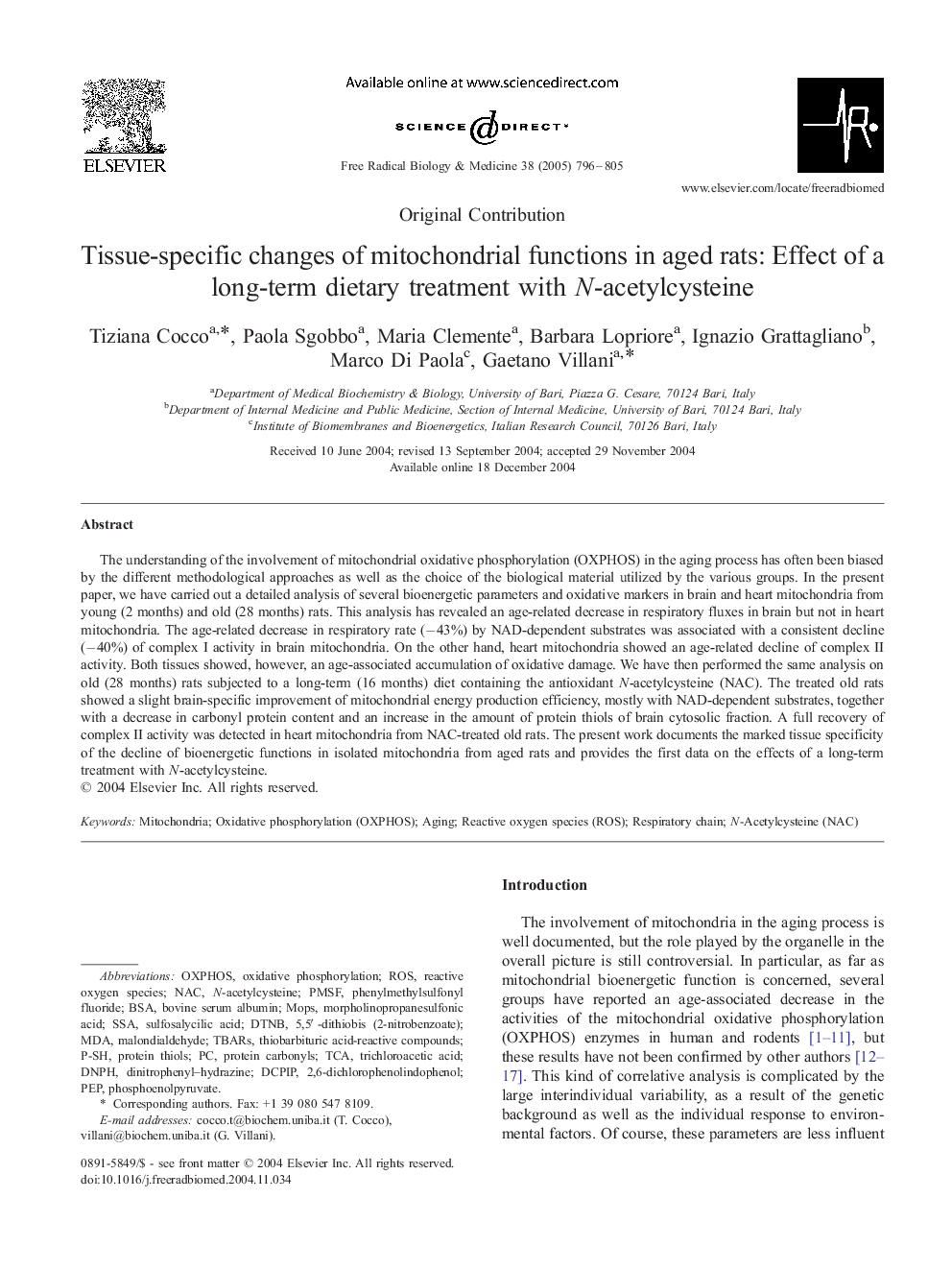| Article ID | Journal | Published Year | Pages | File Type |
|---|---|---|---|---|
| 10738811 | Free Radical Biology and Medicine | 2005 | 10 Pages |
Abstract
The understanding of the involvement of mitochondrial oxidative phosphorylation (OXPHOS) in the aging process has often been biased by the different methodological approaches as well as the choice of the biological material utilized by the various groups. In the present paper, we have carried out a detailed analysis of several bioenergetic parameters and oxidative markers in brain and heart mitochondria from young (2 months) and old (28 months) rats. This analysis has revealed an age-related decrease in respiratory fluxes in brain but not in heart mitochondria. The age-related decrease in respiratory rate (â43%) by NAD-dependent substrates was associated with a consistent decline (â40%) of complex I activity in brain mitochondria. On the other hand, heart mitochondria showed an age-related decline of complex II activity. Both tissues showed, however, an age-associated accumulation of oxidative damage. We have then performed the same analysis on old (28 months) rats subjected to a long-term (16 months) diet containing the antioxidant N-acetylcysteine (NAC). The treated old rats showed a slight brain-specific improvement of mitochondrial energy production efficiency, mostly with NAD-dependent substrates, together with a decrease in carbonyl protein content and an increase in the amount of protein thiols of brain cytosolic fraction. A full recovery of complex II activity was detected in heart mitochondria from NAC-treated old rats. The present work documents the marked tissue specificity of the decline of bioenergetic functions in isolated mitochondria from aged rats and provides the first data on the effects of a long-term treatment with N-acetylcysteine.
Keywords
DNPHPEPPMSFDTNBTBARSOXPHOSNACTCASSADCPIPMOPSMDAsulfosalycilic acidP-SH2,6-dichlorophenolindophenolBSAN-acetylcysteineN-acetylcysteine (NAC)ROSbovine serum albumintrichloroacetic acidRespiratory chainAgingphosphoenolpyruvateOxidative phosphorylationOxidative phosphorylation (OXPHOS)phenylmethylsulfonyl fluoridemalondialdehydemorpholinopropanesulfonic acidMitochondriaProtein thiolsProtein carbonylsReactive oxygen species (ROS)Reactive oxygen species
Related Topics
Life Sciences
Biochemistry, Genetics and Molecular Biology
Ageing
Authors
Tiziana Cocco, Paola Sgobbo, Maria Clemente, Barbara Lopriore, Ignazio Grattagliano, Marco Di Paola, Gaetano Villani,
